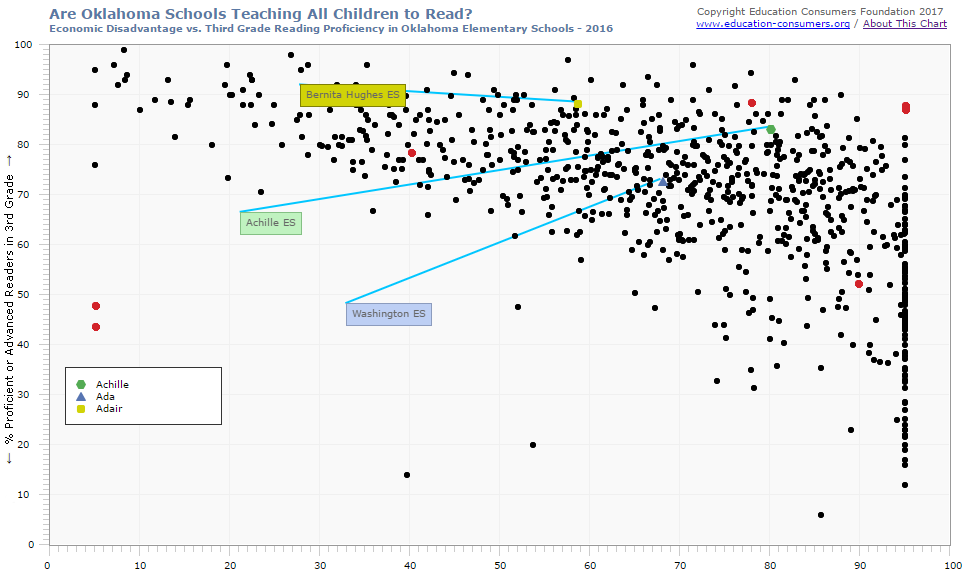Oklahoma: Comparing schools and districts based on student proficiency
The information below reflects the most recent data available to us; please contact us with questions or to request additional analyses.

Available charts:
- Poverty versus 3rd grade reading proficiency rates (2024)
- Poverty versus 3rd grade reading proficiency rates (2023)
- Poverty versus 3rd grade reading proficiency rates (2019)
- Poverty versus 3rd grade reading proficiency rates (2018)
- Poverty versus 3rd grade reading proficiency rates (2017)
- Poverty versus 3rd grade reading proficiency rates (2016)
- Poverty versus 3rd grade reading proficiency rates (2015)
Note: In 2016, Oklahoma began teaching more comprehensive academic standards, which required a new, more complex Oklahoma School Testing Program (OSTP) assessments to measure them. The new tests were given to students in the spring of 2017. Therefore, previous year results should not be compared to the 2017 and subsequent assessments.
Note: In the case of missing percentages, ECF estimated the missing numbers in the proportions suggested by the state NAEP distribution.
Note: If the free/reduced lunch percent for a school was reported as <5%, >95%, or as a range, it was changed to a whole number for graphing purposes.
 Comparing Oklahoma’s Proficiency Standards to the National “Gold Standard” (NAEP)
Comparing Oklahoma’s Proficiency Standards to the National “Gold Standard” (NAEP)
Each state defines for itself what “proficient” means; some states have a rigorous definition, while others are less strict in their standards. To see how states compare, ECF has published charts showing the percentage of students deemed proficient in various subjects and grade levels and compared them to percentages reported for each state by the National Assessment of Educational Progress (NAEP, or “The Nation’s Report Card”), considered to be the gold standard.
